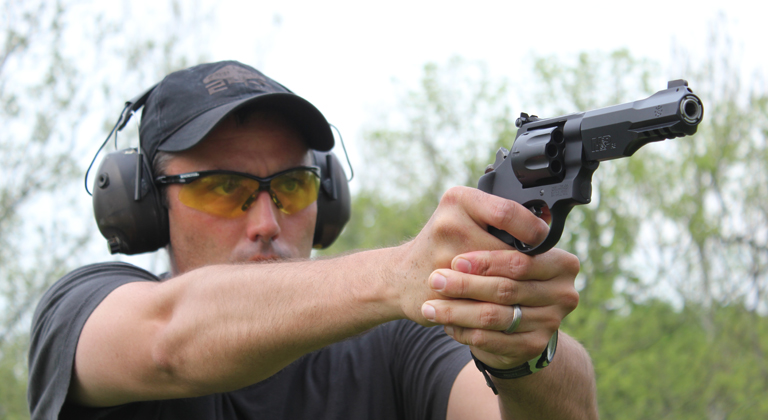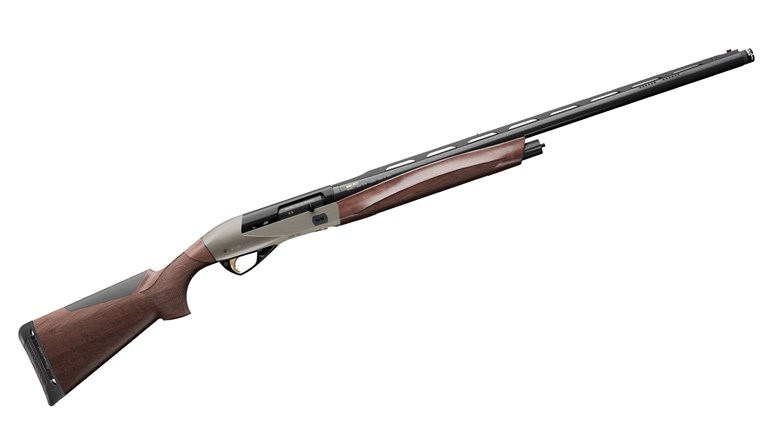
I’ve often thought—and maybe you have too—that you should fear the man or woman who owns just one gun, because they probably know how to use it. Beyond its poeticism, there’s also a great deal of truth behind that phrase, for the person that owns just owns just one gun doesn’t have to choose which firearm to take to the range, doesn’t have to divvy up the monthly ammo budget between a bunch of hungry weapons, and relies on that gun for their personal protection. Of course, many gun owners prefer to have multiple firearms for specific purposes, but depending on your family's budget or storage situation, well, that may not always be possible. If you're just getting started, you'll likely want a firearm suitable for home defense, shooting sports and, potentially, hunting. And, in truth, there are some guns that can accomplish all of these things. Arguments can be made for or against a variety of firearms that aren’t mentioned here, but these three—shotguns, AR-15-style rifles and long-barreled handguns—allow the owner to compete, to hunt and to effectively defend themselves. Which one is right for you? Here’s a guide to help answer that question.
1. Shotguns:
I’ve always touted the versatility of shotguns because, having grown up in Ohio (where shotguns and muzzleloaders were, during my childhood, the only long guns allowed for hunting deer) shotguns were the go-to firearm platform. My friends and family hunted everything with shotguns—rabbits, squirrels, upland game, turkeys, ducks and deer. We also competed with our shotguns, and there was hardly a hardware store around that didn’t keep a fresh supply of clay targets on hand. Everyone kept a box of OO buckshot handy in case of a home invasion, and knowing a scattergun was on the back side of every door in the county kept criminals at bay.
Shotguns definitely rank among the most versatile of firearms. Inexpensive pump-actions are reliable and affordable, and with barrel interchangeability you can quickly swap a 22-inch rifled deer barrel for a 28-inch upland barrel, or an 18-inch home-protection barrel, all while owning just one firearm. Interchangeable choke tubes allow you to change constriction based on the task at hand, and new shotguns like the Mossberg Flex take versatility to a whole new level with interchangeable stocks, forearms and barrels. Plus, if you a competitive streak, there are trap, skeet, and sporting clays courses in every corner of the country, and if you choose to compete in organized events there are a variety of options. If you’re a hunter there’s a lot you can do with a shotgun. As previously mentioned, you can hunt birds and small game, but modern rifled barrels make these guns legitimate big-game guns, too.
The downside of shotguns is limited range and hefty gun weight and recoil. A 12-gauge pump with light targets loads isn’t so bad, but recoil can go up quickly as heavier defensive-type loads are used. 20-gauge guns are a good option for the recoil-sensitive, and 28 gauge and .410 options are even better.
2. AR-15-Style Rifles:
Despite mainstream media attempts to demonize the AR and villainize all AR owners, this rifle platform is extremely versatile and is a compelling choice for the single-gun owner. For starters, ARs are modular, so you can truly find (or build) a firearm to suit your needs, with stocks, barrels, handguards, optics, slings and much more that are specific to your needs and tastes. 5.56 ammunition isn’t as cheap as shotgun field ammo, but the 5.56 produces scant recoil (especially compared to magnum shotgun loads), and that caliber can reach out to great distances. It’s an ideal round for predators and varmints and, in some states, it’s legal for deer. But the good news with an AR is that you can quickly convert the rifle to something like the potent .25-45 Sharps for larger game where .22s aren’t legal for whitetails. Years of use and abuse in some of the toughest environs in the world have proven the AR design to be robust and reliable, and ARs are capable of extreme accuracy.
NRA High Power matches are a great deal of fun and a great way to test your skills with your AR rifle. Matches have slow- and rapid-fire portions, with ranges extending from 200 yards to as much as 600 yards, and even if you simply attend these competitions at first and don’t shoot you’ll learn a great deal about marksmanship and safe gun handling.
ARs can work well for home defense, too, and there are a growing number of ammo companies that are offering loads specifically designed for that purpose.
3. Long-Barreled Handguns:
The classification long-barreled handguns is to help set these guns aside from the more compact, easy-to-carry revolvers and semi-autos that are designed for concealed carry. And while those carry guns are perfect for personal protection and can be used in competition, they’re not commonly used for hunting. Long-barreled guns, on the other hand, are more versatile in the field. This could be a revolver in a variety of calibers including .327 Federal, .38/.357 or .44 Magnum (which can also use .44 Special, a lighter-recoiling load that works very well for personal defense applications). It could also be a semi-auto in calibers like the 10mm Auto, which is very potent and legal for big game in some states. These guns are easy to store securely in the home thanks to their smaller size, and their accuracy potential is excellent. You can use these guns for IDPA and other competitions to help hone your skills, and there are a number of handgun competitions around the country. For instance, I own a modified Ruger GP100 in .357 Magnum that is legal for deer hunting in my home state of Ohio, perfectly suited for competition, and with the large number of available defensive loads in .38/.357, there are plenty of options for personal protection.
These guns are relatively affordable and ammunition is generally (depending on caliber) easy to find and affordable. Plus, many new shooters find that a revolver is very simple to operate and maintain due to its minimal number of moving parts. Semi-autos function equally well, although there is a bit steeper learning curve with regards to basic function, maintenance and operation. As an added bonus, if you do own a long-barreled revolver or semi-auto, and do decide you’d like to buy a gun to carry you can purchase a smaller, compact firearm chambered in the same caliber so you don’t need to buy a bunch of different loads.
If you had to choose just one gun, what would it be? Weigh in in the comments!






































